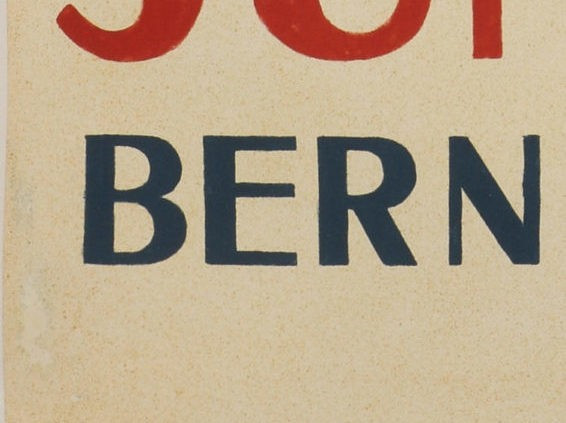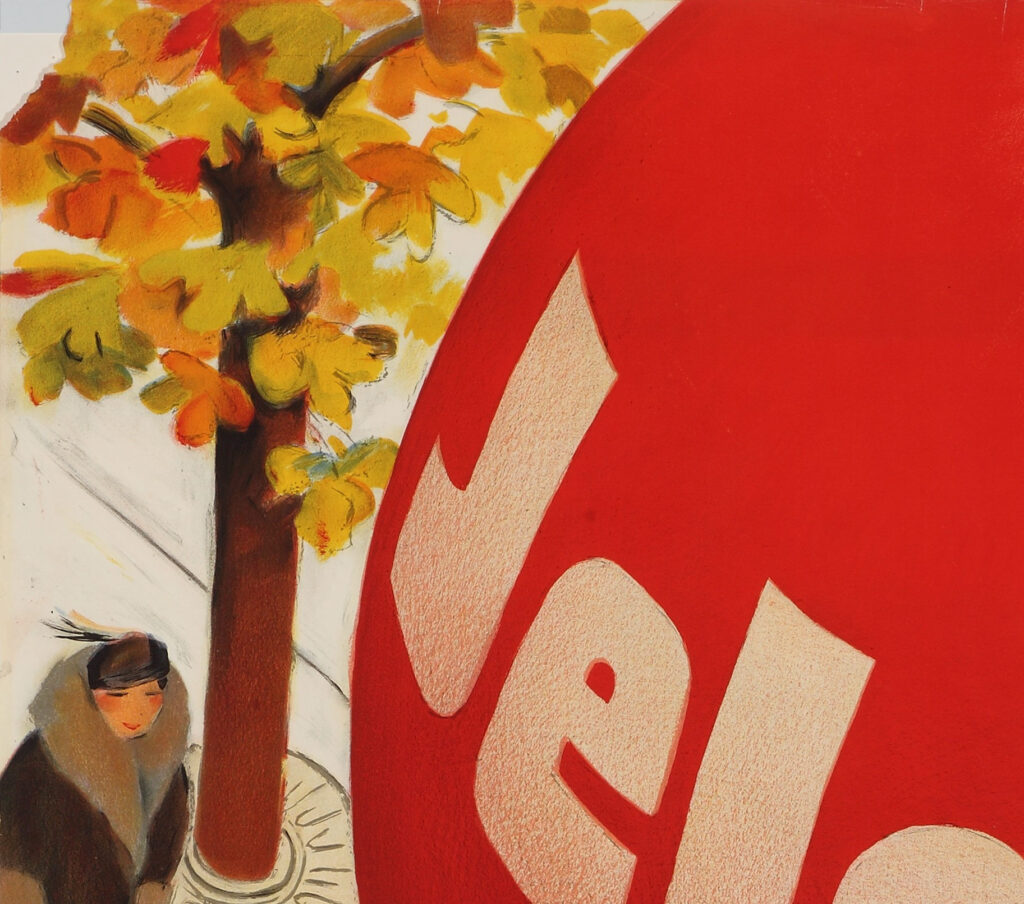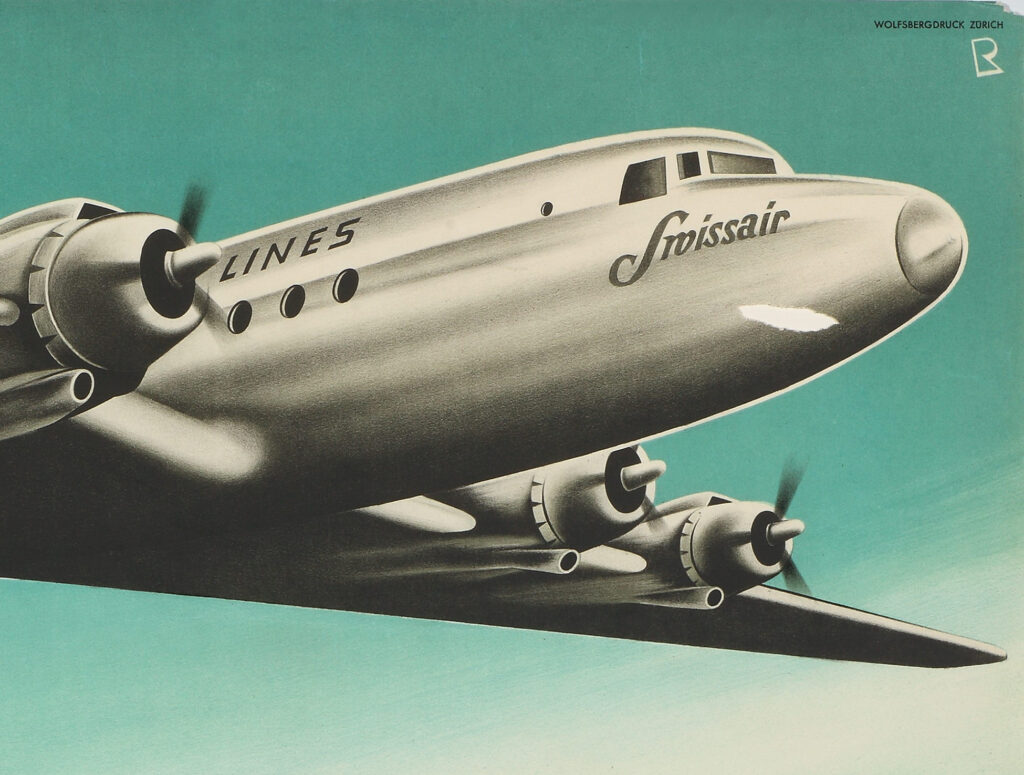The ABC of rating
As previously mentioned, posters are not objects created for posterity. They are every-day utility items – printed for public notice and soon destroyed, over-glued or torn away by wind and weather. Copies that have nevertheless survived over decades, or even an entire century, are those that served the author, printer or client as specimen samples, or which the first collectors procured.
In light of these circumstances, the description of the condition of posters does not follow the same strict criteria as that used for hand-signed lithographs, like those employed for such works by Picasso, Léger or Le Corbusier.
Instead, the most critical criterion in assessing the condition of a poster is its appearance, meaning that the classification depends on the answer to the following question: How well does each copy reflect the original idea of design and effect?
Meanwhile the following guidelines now serve for classifying and rating posters – with a trailing minus or plus sign designating a slightly worse, or respectively better condition. Admittedly, this evaluation procedure cannot be considered an exact science – meaning, the boundaries between an «A-» and «B+» can be unclear. In the final analysis, the evaluation rests in the eye of the beholder – especially when the seller and interested party together closely inspect a particular example.
Condition A
«A» refers to a poster that is in a nearly brand-new condition. The colors are strong, and there are minimum losses of and tears at most in the leaf margin. No, to very minimal creases, wrinkles, slightly abraded areas or small bruises are visible. An «A» poster demonstrates no such, or hardly any, blemishes. A poster with a few additional minimal flaws receives a rating of «A-». Restorations are possible, but in light of the only slight damage, are in most cases, not advisable or necessary.
The illustration of a section of Emil Cardinaux’s «Jungfrau Bahn» from 1924 shows a defect, which, however, at first glance is unrecognizable: It is an abrasion in the lower left margin; a blemish that is indeed no reason to demote this «A» classified poster to an «A-».

Emil Cardinaux’s poster «Jungfrau Bahn» with the abrasion in the lower left corner.
Condition B
«B» designates a poster in good, «B+» in very good condition. Such an item, for example, may, in particular areas, exhibit small tears or fissures, which protrude a few centimeters into the motif. Posters with these ratings may have already undergone restoration, or in the cause of heavy abrasion, retouching, which, however, is not obvious. An example with this flaws, along with faded colors or even replaced paper losses, designates a «B-». On the other hand, a poster, which has been expertly restored of a small defect, and hence has thereby gained a fresh appearance despite this loss, belongs more in the «A» than in the «B+» category.
The illustrated Jelmoli poster by Hugo Laubi from 1933 is missing the upper left corner – a far more critical injury than the abrasion described above. Nevertheless, this loss is not in a crucial area of the poster and no misfortune insofar as an experienced restorer can provide a treatment, so that the flaw is only recognizable to a very attentive viewer. Without undergoing repair as mentioned above, such a poster would necessarily receive the rating of «B+». After undergoing such a repair, posters of this quality would receive an upgrade to an «A-», providing there is no further (unrestored) damage.

The described Jelmoli poster by Hugo Laubi (1933), which lacks the upper left corner.
The missing part in the fuselage of the DC-4 of the Swissair on the poster created in 1948 by Bernhard Reber apparently a sign of severe damage. In this condition, a restoration of a «B» or even «B-» poster is always worth the effort – for aesthetic as well as financial reasons since the added value of the restoration exceeds the cost of the restoration itself. Masterly repair of such a defect elevates the poster to a «B+».

Bernhard Reber’s DC-4 (1948), with the perforated hull.
Condition C
A «C» rating refers to a poster that has suffered extreme damage and is nearly or completely beyond rescue through restoration – or only with disproportionately high effort. Posters that fall under this category may already have been subject to restoration but in an unmistakably flagrant, and extensive and careless manner. Fissures and fractures run through large parts of the object, the colors are sometimes extremely faded, and numerous blisters have formed as a result of improper mounting. Placart does not offer «C» posters.


Two portions of Jane Atché’s heavily battered poster «Job», 1896.
Mounting posters
One factor in which opinions can differ strongly concerns the mounting of posters. Some gallerists, curators, and collectors, among others, prefer the (necessarily reversible!) stabilization process, employing Japanese paper or linen fabric and often including a wide margin around the poster. Others consider this mounting scheme to reduce the degree of originality. At Placart, we believe that professional and reversible mounting can serve to a highly reliable level of protection against tearing, wrinkling and creasing. However, we also advise against preemptively mounting a poster in excellent condition that will (soon) be framed anyway.
